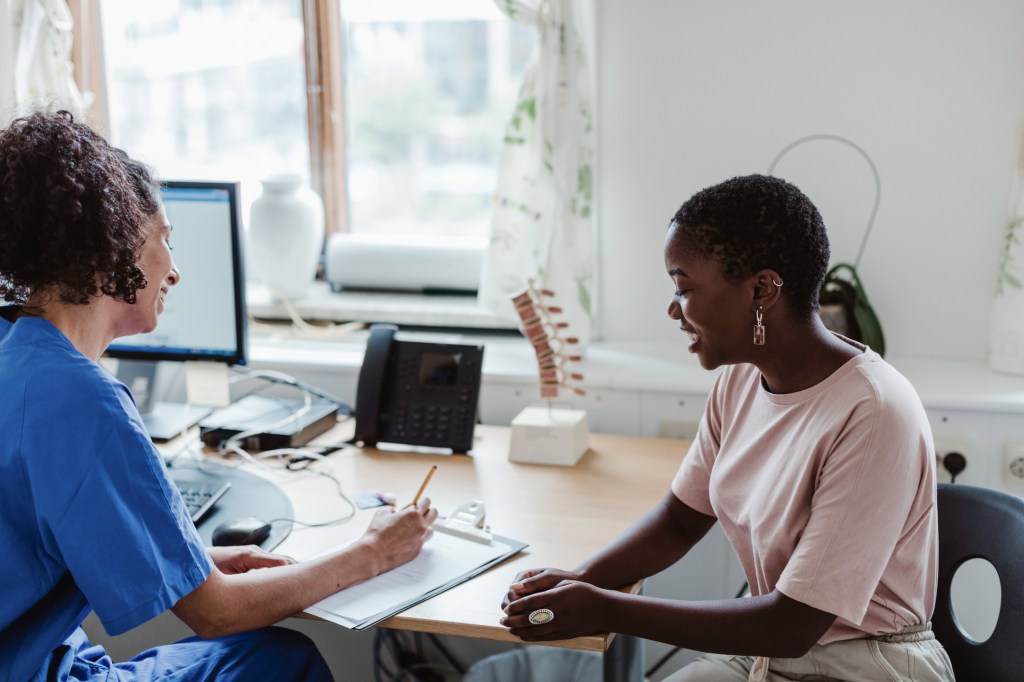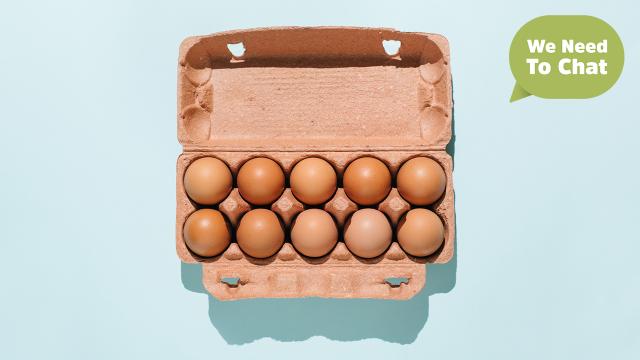From my late teens all the way through to my mid-to-late twenties, I considered myself a ‘relationship girl’ (cringe, I know). I was someone who didn’t much enjoy casual dating, and often found myself cosied up in long-term relationships. In my naive mind, I assumed there would be a neat, linear process to my romantic story, leading to me getting hitched and popping out a child by 30. Thoughts about fertility planning, non-traditional families (whatever that even means), and solo living never even popped up on my radar.
Because, at that point, I’d never seen any of those other roads taken by anyone close to me. I assumed the cookie-cutter picket fence concept was a simple, almost deserved, storyline that I would have no issue achieving.
But a few major breakups (one rather traumatic), a two-year stint abroad, and a global pandemic later, here I am. White picket fenceless. And kind of unsure about how the picture of my romantic, and family life, will come together.
That’s not necessarily a negative thing, but what I’m learning as I continue on through my journey is that so many of us — women in particular — are programmed to believe there is one ‘normal’ way to navigate life, that we don’t even consider the possibility that a spanner could be thrown into the works, causing our plans to come to a screeching halt. If, that is, we decide that ‘normal’ is what we want after all.
Whether it’s a history of falling for emotionally unavailable men, a sizeable speedbump in life like losing a job, or fertility troubles, there are all kinds of ways in which personal plans can be slowed, or completely derailed, and they actually aren’t all that uncommon.
But because no one likes to talk about the fact that things sometimes go wrong, loads of us wave off the possibility; telling ourselves and others that “it’ll all work out”.
Now, there will be times (many of them) where things genuinely will work out to be okay. Let me tell you, I hope that is the case for everyone reading this. But the uncomfortable truth is that there are times when it won’t be.
Or, at least, the version of okay we end up with won’t be what we were expecting. And what I’m coming to understand is that for single women in their late 20s and older, there really isn’t much open discussion about choice and proactivity in family planning.
Instead of clear guides on how to appropriately prepare should you want children, all we’re offered are empty promises that things will be “fine” and references to the fact that “Meghan Markle had her first child at 37”.
When I decided to bring the topic up with my GP, she told me not to worry about it and to come back when I’m 35.
We’re taught from childhood that a woman’s ‘expiry date’ approaches post-30, then once we get there, we’re told to chill out when we want our anxieties heard.
So, when I learnt that Kin Fertility was offering access to a fertility test you can order online, it immediately caught my attention. My main questions here were: what information does it offer and how helpful is it, really?
Proactivity in the procreation space

“Traditionally, doctors only recommend the fertility hormone test when you’ve been diagnosed with infertility,” Nicole Liu, Founder of Kin Fertility told me over the phone.
“That’s typically if you’ve been trying to conceive for 12 months if you’re under the age of 35 or trying for six months if you’re over the age of 35.”
She explained that in most cases the healthcare system takes a “reactive mindset” with fertility; responding to troubles in falling pregnant with further testing, rather than encouraging women (and all people, really) to enter into the experience informed.
And look, for loads of people this approach works fine. But if you’ve ever met someone who is struggling to conceive, and the pain that process puts people through, you’d know that access to more information before that six or 12-month mark could make a significant difference.
While complete infertility is actually incredibly rare, Liu explained that when it comes to “difficulty in having a child, which then medically gets classified as infertility, one-in-six is sort of the number that gets used”.
In fact, part of the reason Liu is so invested in this area of science is because at 24 years old she was told she would be infertile.
“I feel like it’s just something you don’t think about until something goes wrong,” she explained.
And in her experience, rather than being presented with options, the verdict that was handed down to her was “you’re infertile; you have PCOS”.
What Liu touched on here was that even with a condition like PCOS (Polycystic Ovary Syndrome), there are a number of roads you can take to hopefully make falling pregnant an easier journey.
“But [at that time] those were all things that weren’t taught to me.”
What’s involved in a hormone fertility test?
Okay, so if you (like me) are a woman or person with a uterus who’s thinking about their family planning options, you may be pretty intrigued by the prospect of a fertility hormone test. But what do they involve? How much information are you given? And how much do they cost?
While, as we mentioned earlier, there is the option of sourcing a test through your doctor, it seems that in most cases these are reserved for people who are actively trying to fall pregnant. Remember: reactive approach, yeah?
That’s the barrier I found myself limited by, so when I was offered the option to trial the Kin test as a part of this article, I jumped at the opportunity. With that considered, I’m only able to speak to this one means of accessing a fertility test, although there are others.
Kin’s test, Liu shared, looks at about eight of your fertility hormones. “It’s actually the same test that you would get from a fertility specialist,” she said.
You sign up for the test online and it’ll cost you $299 to complete. From here, you’ll file through a rather comprehensive questionnaire about your lifestyle, plans and symptoms. Based on your results, you’ll be given a blood test referral which you can take to one of the partner pathology clinics. One annoying thing to point out is you’ll need to print your referral out — I don’t have a printer, but eventually figured it out.
Once your results are in (it takes a few days) you’ll be able to set up a video call with a Kin doctor who will walk you through all the details and possible planning options specific to you.
Getting the fertility test, first-hand

It’s at this point in the story that things got a little odd for me. I completed my online questionnaire, got my referral, printed it out and proceeded to shove it in a drawer.
I didn’t pick that referral back up again for about six months. Granted, we did have a lockdown during this time, so that absolutely delayed me in completing the blood test… but it’s not the entire reason.
I was scared.
The idea of hearing results about my body and my likelihood of starting a family read out loud absolutely terrified me. For all my frustration of not having access to this insight before, the idea that I may receive unsettling news almost made me want to run back towards the comfort of blindly believing it’ll all work out.
All those thoughts of how my life ‘should’ look and the anxiety that comes from not fitting into the mould society tries to squeeze us into kind of paralysed me. Who would I be if this story I’ve always believed would be mine didn’t write itself?
It’s a pressure almost every woman will feel at some point, whether they want kids or not.
But eventually, I came to the conclusion that not asking the question doesn’t change the answer. So, I leant into my big old Virgo energy and chose to be informed.
After I (nervously) went in for my blood test, I set up my 30-minute fertility consult with a Kin doctor. The discussion we had was mind-blowing.
I won’t go into the details of my results because I don’t even think that’s the core takeaway here. But what they did was compassionately and thoroughly walk me through my options should I want to conceive now or in a few years; the technology that’s now available and how much it costs to sign up for each option (it varies, but it’s not cheap).
We also spoke about what you should be doing health-wise before looking to become pregnant — like checking your vaccinations are up to date — and the science of egg health as we age.
The doctor spoke to me clearly, she took my questions seriously and she calmed my anxieties. I left that consult feeling charged.
If you’re interested, you can take a look at all the data that is covered during each consult in a nice little slideshow here.
A little data break down
Stepping away from my experience for a moment here, I thought it would be useful to talk about some stats very quickly. Although assorted family planning procedures are not really spoken about all that widely, they are becoming increasingly popular.
According to data from Monash University released in late 2021, the rate of egg freezing has increased by more than 1,000 per cent between 2010 and 2019. One thousand per cent.
However, quite interestingly, studies seem to indicate that less than 10 per cent of people who freeze their eggs actually go on to use them. Whether that’s because of falling pregnant naturally, or a change of mind, I can’t tell you — but it’s certainly something to keep in mind.
When it comes to IVF specifically, a UNSW report from 2020 indicated that almost one in 20 babies born in Australia is conceived through the procedure. And encouragingly for those who decide to take this route, success rates are improving — especially if you’re a woman under 35.
So, yeah. Safe to say you’re not alone if the topic of fertility and conceiving has a big old question mark hanging over it for you.
What now?
Since going through the fertility test process, I’ve thought hard about what it is I want in the next few years of my life. It hasn’t removed all the uncertainty from what’s to come (nothing can give you that, honey) but it has armed me with an understanding of when I should be making big family planning decisions, and where to go if I choose to do so.
And in a period that has robbed so many of us of so much time, I for one am glad I’m now able to feel a little more steady-handed in how I navigate this part of my life.
I guess we’ll see what happens, hey?

Leave a Reply
You must be logged in to post a comment.